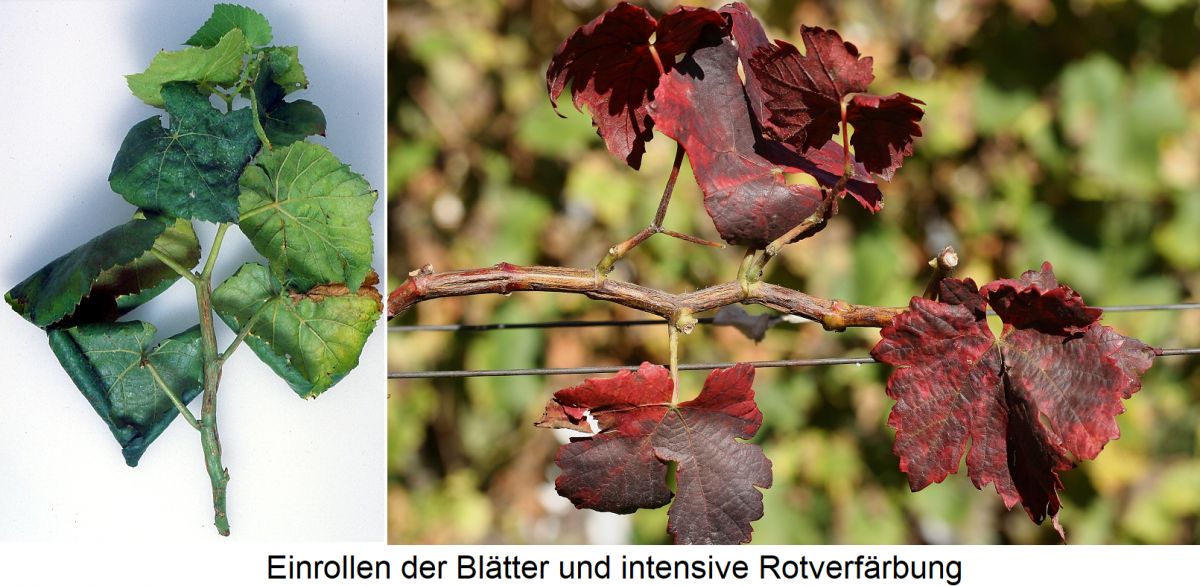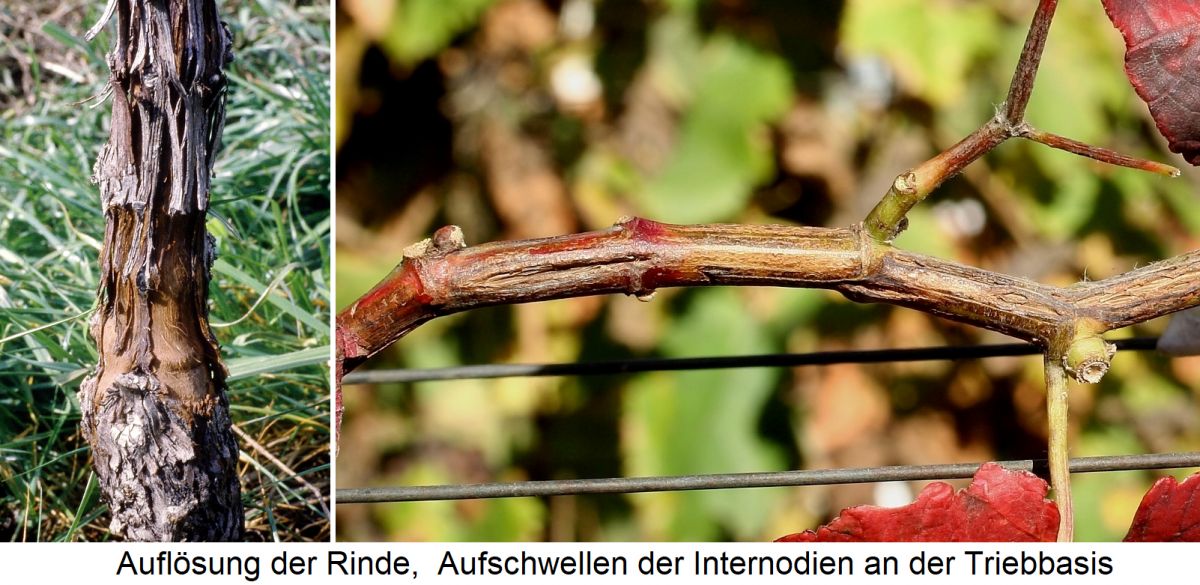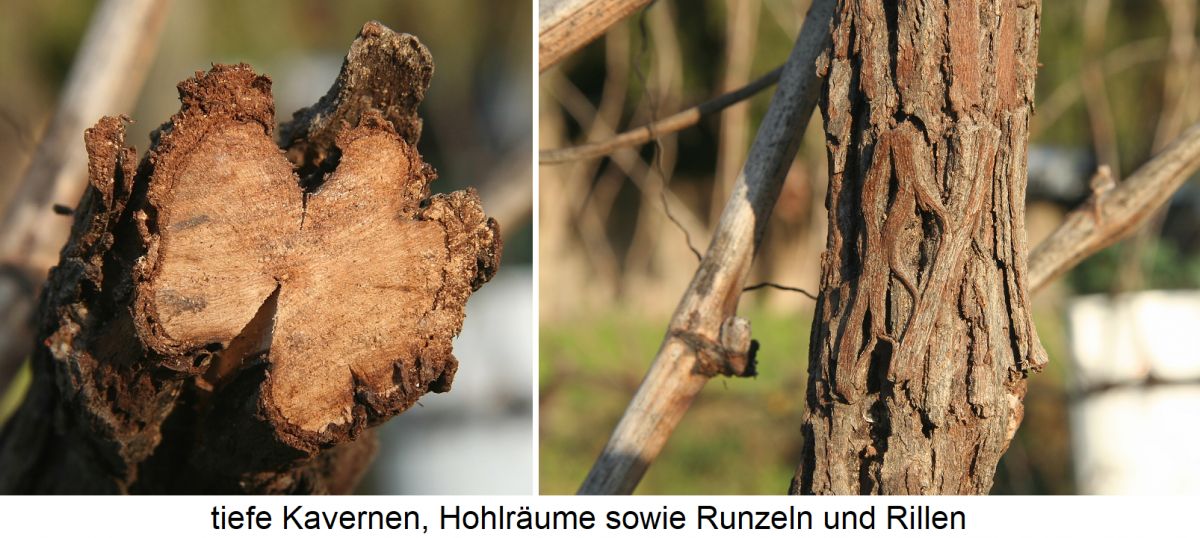English name (short RW) for a group of vine wood diseases that are presumably caused by viruses. These include corky bark disease, stem grooving and stem pitting. The causes have not yet been fully clarified; presumably, they are virus groups such as Grapevine clostrovirus A and B and various leaf roll virus complexes. All these diseases lead at least to a reduction in yield and a significantly reduced life span of the vines. The transmission or spread of the diseases occurs (at least in Europe) mostly during grafting through infected rootstocks (rootstocks) or scions (tops). Only in Mexico and the southern USA is there evidence of scale insect transmission (Corky bark). The symptoms of the different diseases are very similar, because wood and bark are affected by the infection.

Cork bark disease (Corky bark)
This is extremely dangerous because it is usually fatal for the vine. So far it seems to occur exclusively in the USA, but in Italy a similar disease called Legno Riccio (wood curl) is known. Particularly typical is the swelling of theinternodes at the base of the shoot, combined with cracking. The leaves turn yellow and, in the case of red wine varieties, intensely red and curl downwards (similar to leaf roll disease). However, compared to healthy plants, they remain longer on the vine and only fall off later. The wood matures very poorly. The outer layers of the bark on the trunk are broken down. Swelling occurs at the grafting point, the upper part dies off, while the rootstock often survives.

Trunk grain (stem grooving) and wood wrinkle (stem pitting)
The disease manifests itself by exceptionally delayed budding, reduced growth with diminished size and death of the woody parts. The typical symptoms are thickening and cranking, especially on older vines, a thick bark with a coarse surface as well as longitudinal scars, grooves (grooving), wrinkles or pitting. Here too, the leaves of red wine varieties turn an intense red colour. If the bark is peeled off the trunk in the area of the grafting point, caverns (hollows) appear in the wood, especially in the underlay. For lack of reserve substances, the infested vines usually die after unfavourable weather conditions.

Diagnosis and control
Disease is determined by ELISA, indexing or PCR. However, an exact diagnosis is only possible by a test refinement on a specifically sensitive (hypersensitive) substrate. The most successful are so-called green refinements, in which a green graft is grafted onto a green, unrooted rootstock. The symptoms of the disease appear relatively quickly. Infested plants must be cleared in order to determine the disease exactly. The most suitable control method is health selection. In Austria, the project "Certification of vines" was started as early as 1993. The aim of this project is to increase the quality of vines in the long term by means of appropriate analyses and selection of the healthiest possible vine stock material (certified clones).

all pictures: WineLand South Africa
Voices of our members

I have great respect for the scope and quality of the wein.plus encyclopaedia. It is a unique place to go for crisp, sound information on terms from the world of wine.
Dr. Edgar Müller
Dozent, Önologe und Weinbauberater, Bad Kreuznach